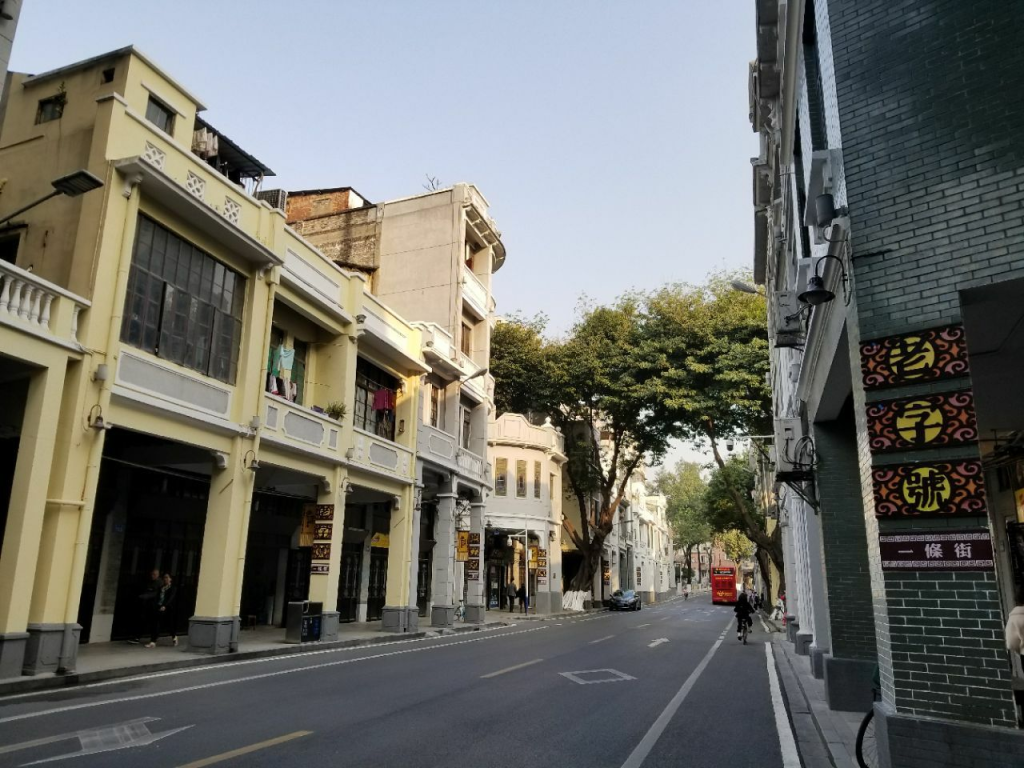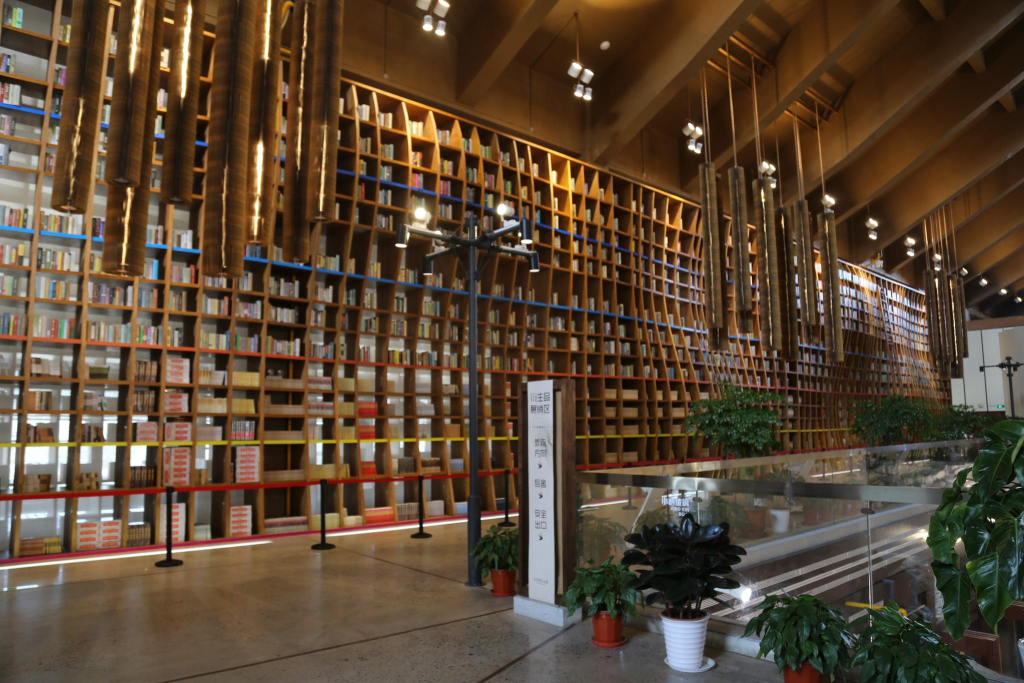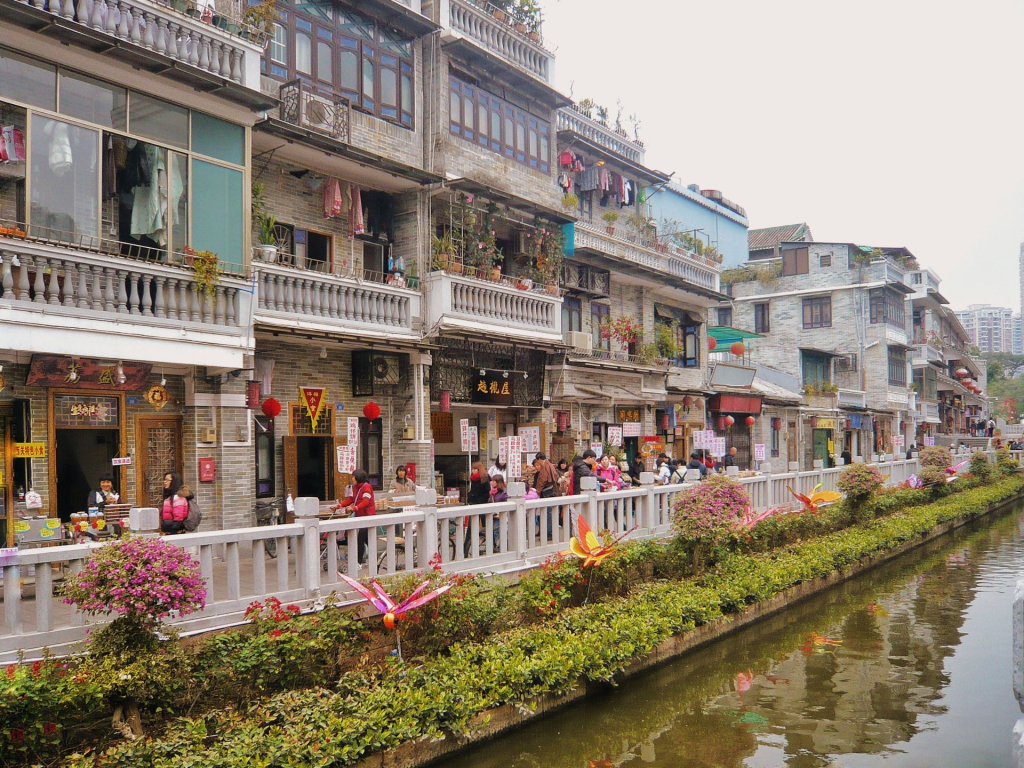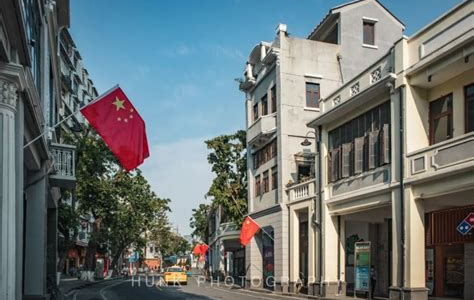Are there any cultural villages or heritage sites in Guangzhou?
🌆 Does Guangzhou Have Any Cultural Villages or Heritage Sites That You Can Visit?
Guangzhou, the capital of Guangdong Province in southern China, beautifully blends ancient traditions with rapid modernization. 🏙️ While often overshadowed by Beijing’s imperial grandeur or Shanghai’s cosmopolitan allure, Guangzhou boasts a rich cultural tapestry spanning over 2,200 years of history. As one of China’s earliest trading ports, it developed a unique Lingnan culture—a southern Chinese culture influenced by its Cantonese roots and international connections. 🌍
Travelers seeking genuine cultural experiences beyond shopping malls and skyscrapers will find Guangzhou home to numerous cultural villages and heritage sites. 🏘️ These places offer glimpses into the region’s distinctive history and customs. This article explores these cultural treasures, from preserved ancient villages to magnificent ancestral halls and temples, providing insights into experiencing the genuine essence of this dynamic metropolis. ✨
Guangzhou’s Cultural Villages 🏘️
Cultural villages in Guangzhou are like living museums, preserving traditional architecture, customs, and ways of life despite rapid urbanization. 🏞️ These enclaves provide visitors with glimpses into Guangzhou’s pre-modern past and immersive experiences of Lingnan culture.
Old Houses in Xiguan Town 🏡

Xiguan (West Gate) is a historic neighborhood in Guangzhou’s Liwan District. 📍 During the late Qing Dynasty and Republican era, it was home to wealthy merchants and gentry. The distinctive architectural style, “Xiguan Mansions” or “Qilou” (arcade houses), is the pinnacle of traditional Lingnan residential design. 🌟
These exquisite structures blend Chinese and Western elements, reflecting Guangzhou’s historical role as a trading crossroads. 🤝 Upper floors were living quarters for extended families, while ground floors housed shops with covered arcades protecting pedestrians from the subtropical sun and rain. ☀️☔️
Enning Road (Enning Lu) has a collection of the best-preserved historic buildings. Recent restoration efforts have transformed this region into a cultural corridor, where visitors can explore:
- The Lao Fengxiang Jewelry Shop: A beautifully preserved Qilou building housing one of China’s oldest jewelry brands, established in 1848. 💎
- Taotao Ju: A well-known dim sum restaurant since 1880, where traditional Cantonese culinary arts thrive. 🍵
- Ruifeng Print Shop: A long-standing printing establishment showcasing traditional Chinese printing techniques. 🖨️
Visitors can observe distinctive architectural features like “oyster shell windows” (circular windows with intricate patterns), carved stone door frames, and interior courtyards designed for optimal ventilation in Guangzhou’s humid climate. 🪟 Many homes are adorned with intricate stone and wood carvings depicting benevolent symbols from Chinese mythology. 🐉

The Village of Liede 🏘️
Liede Village is a fascinating example of cultural preservation amid urban development. 🏗️ Over 900 years ago, during the Southern Song Dynasty, this urban village in the contemporary Tianhe District originated. Unlike many ancient villages destroyed by Guangzhou’s expansion, Liede underwent a remarkable transformation. 🌟
In 2007, village leaders negotiated an innovative arrangement as development pressures increased. The original village would be reconstructed nearby, preserving its layout and cultural heritage while adding modern amenities. 🏘️ Today, New Liede Village preserves its traditional ancestral halls and community structures while enhancing residents’ living conditions.
Visitors to Liede can explore:
- The Liege Ancestral Hall: An ancestral temple dating back to the Ming Dynasty, dedicated to the founding families, hosting traditional ceremonies during festivals. 🏮
- The Liege Cultural Museum: Documenting the village’s history, from its agricultural roots to its unique urban transformation. 📜
- The Lingnan Water Garden: A traditional garden demonstrating the region’s distinctive incorporation of water features into landscape design. 🏞️
The village comes alive during traditional festivals, especially Chinese New Year and the Mid-Autumn Festival. Public spaces host lion dances, folk performances, and ancestral ceremonies. 🦁🌙
The Village of Lubao 🏡
Lubao Village, in the northern Huadu District, offers visitors a rural Lingnan culture largely untouched by urban development. 🌳 Established during the Ming Dynasty (1368-1644), it’s known for ancient banyan trees, some over 600 years old. These trees shade the stone pathways and ancestral halls within the village. 🌿
Lubao’s layout adheres to traditional feng shui principles, with buildings arranged harmoniously in relation to the hills and water sources. ⛰️ Among the most distinguishing characteristics of the village are:
- Banyan Tree Square (Ancient Banyan Tree Square): The village’s central plaza, where community gatherings and traditional performances occur under towering banyan trees. 🌳
- The Ancestral Temples: Meticulously preserved halls honoring the founding families, featuring traditional wood carvings and ancestral tablets. 🙏
- Traditional Courtyard Houses: Residences built in the Lingnan style with central courtyards, some still inhabited by descendants of original families. 🏘️
The village’s relative isolation has helped preserve intangible cultural heritage elements like folk songs, traditional crafts, and agricultural techniques passed down through generations. 🎶 Lubao provides a more genuine experience compared to purpose-built tourist attractions, ideal for those interested in authentic rural Lingnan culture. 🌾
Cultural and Historical Sites in Guangzhou 🏛️
In addition to its cultural villages, Guangzhou boasts numerous heritage sites highlighting the region’s architectural accomplishments, religious traditions, and historical significance.
The Ancestral Hall of the Chen Clan 🏯
The Chen Clan Ancestral Hall, also known as the Chen Clan Academy, is Guangzhou’s most impressive example of Lingnan architecture. Constructed between 1888 and 1894, it served as an ancestral temple for the Chen family clan and an academy where young members prepared for imperial qualifications. 🌟
The complex spans approximately 13,000 square meters, comprising 19 buildings with 9 halls and 6 courtyards arranged symmetrically along a central axis, according to traditional Chinese architecture principles. 📏 The Chen Clan Ancestral Hall stands out due to the extraordinary quality and variety of its decorative arts:
- Roof Ridges: Adorned with intricate porcelain figurines depicting scenes from Chinese literature and mythology. 🎭
- Wood Carvings: Intricate carvings of birds, flowers, and historical scenes decorate beams, columns, and window frames. 🐦🌸
- Stone Carvings: Intricate sculptures made of granite and marble depicting traditional motifs and stories. 🗿
- Brick Carvings: Decorative brickwork showcasing Lingnan craftsmanship. 🧱
- Iron Castings: Ornamental ironwork demonstrating advanced metallurgical technique development. ⚙️
The Guangdong Folk Art Museum is now located within the complex, showcasing traditional crafts like embroidery, pottery, and paper-cutting. 🧵 From a single location, the site provides visitors with the most comprehensive example of traditional Lingnan architectural artistry. 🎨
Temple of the Six Banyan Trees (Liurong Temple) 🌳
The Temple of the Six Banyan Trees, also known as the Liurong Temple, is one of Guangzhou’s oldest and most significant Buddhist temples. Established in 537 CE during the Liang Dynasty, the temple has undergone numerous reconstructions and expansions over its 1,500-year history. 🙏
The Flower Pagoda (Hua Ta) is the temple’s most striking feature, an octagonal structure measuring 57 meters in height, initially constructed in 1097 and reconstructed during the Ming Dynasty. 🌸 Its distinctive design has made the pagoda a symbol of Guangzhou, visible from many parts of the city. 🗼
Several halls within the temple complex house significant Buddhist artifacts, including:
- Mahavira Hall: Home to three bronze statues of Buddha, each representing a different time period: the past, present, and future. 🧘
- Devajara Hall: An impressive collection of statues depicting the Four Heavenly Kings. 👑
- Sixth Patriarch Hall: Dedicated to Huineng, the Sixth Patriarch of Zen Buddhism, who resided at this temple for a period of time. 📜
Visitors can observe Buddhist ceremonies and the daily routines of resident monks at the temple, which remains an active place of worship today. Special ceremonies are held during major Buddhist festivals, particularly on Guanyin’s birthday, attracting devotees from all over the region. 📿
Memorial Hall in Honor of Sun Yat-sen 🏛️

This impressive octagonal building pays tribute to Dr. Sun Yat-sen, the founding father of modern China, standing as both an architectural landmark and a tribute to his revolutionary legacy. Completed in 1931, the memorial hall combines modern construction techniques with traditional Chinese architectural elements. 🇨🇳
Traditional Chinese color symbolism is reflected in the building’s distinctive blue roof tiles and red columns. The octagonal shape, unusual for Chinese architecture, symbolizes Sun’s “Eight Virtues” philosophy. 🌟 The main hall houses a massive bronze statue of Sun Yat-sen, accommodating three thousand people.
The memorial hall features exhibitions focusing on Sun’s life and revolutionary endeavors, as several of his revolutionary activities took place in Guangzhou. The city served as the foundation for Sun’s revolutionary government during the 1920s, playing an essential role in his journey to establish a contemporary democratic republic in China. 📜
The surrounding gardens offer a tranquil escape from the city’s hustle and bustle, designed with traditional landscaping elements. 🏞️ Cultural performances are held regularly, particularly during national holidays and anniversaries associated with Sun’s life. 🎭
The Island of Shamian 🏝️
Shamian Island provides a unique and striking contrast to Guangzhou’s traditional Chinese heritage sites. Following the conclusion of the Second Opium War (1856–1860), this small sandbank island in the Pearl River served as a foreign concession split between British and French control. 🌍 The European powers transformed the island into a sophisticated enclave featuring tree-lined avenues and Western-style buildings.
To this day, Shamian has preserved more than 150 historical buildings designed in various architectural styles, such as Neoclassical, Gothic, and Baroque Architecture. 🏰 The following are important locations:
- The Our Lady of Lourdes Chapel: A Catholic church constructed in the Gothic style in 1892. ⛪
- Former British Consulate: A magnificent colonial building now transformed into a hotel. 🏨
- The White Swan Hotel: Constructed on the site of the former British Embassy, incorporating elements of the building that was at the time of its construction. 🦢
Tourists and locals seeking an escape from the city’s hustle and bustle are drawn to the island’s tranquil atmosphere, characterized by pedestrian-friendly streets and riverside promenades. 🚶 Cafés in former colonial buildings offer patrons the opportunity to appreciate the architecture while enjoying refreshments. ☕
Guangzhou’s Cultural Activities and Experiences 🎭

Understanding Guangzhou’s cultural heritage requires more than visiting physical sites; it also requires experiencing the city’s living traditions, particularly its distinctive culinary practices and performing arts.
Opera done in Cantonese 🎶
Cantonese Opera, one of southern China’s most distinctive cultural traditions, has been designated as an Intangible Cultural Heritage by UNESCO. 🌟 This elaborate art form tells traditional stories through singing, martial arts, acrobatics, and elaborate costumes and makeup. 🎭
The Guangdong Cantonese Opera Art Center hosts regular performances and exhibitions, providing information regarding the history and techniques of the art form. 🎭 Visitors can participate in performances at the Yueju Opera Art Museum or temporary stages set up during traditional festivals, offering genuine experiences.
The Cantonese Opera Museum in Liwan District introduces this art form through costume displays, audio recordings, and occasional demonstration performances, ideal for visitors with limited time to spend discovering this art form. 🎧
The Culture of Lingnan 🏞️
“Lingnan” describes the cultural region including Guangdong, Guangxi, and parts of adjacent provinces. 🗺️ The subtropical climate, maritime connections, and geographical distance from China’s central political power contributed to the development of distinctive characteristics in the Lingnan culture.
Guangzhou is home to museums and cultural centers providing insights into various aspects of Lingnan culture, including:
- The Guangzhou Museum: Located in Zhenhai Tower, it takes visitors on a journey through Guangzhou’s history, from ancient times to the present day. 📜
- The Guangdong Museum: A comprehensive collection of exhibitions on Lingnan folk customs, traditional crafts, and natural history. 🏞️
- The Lingnan Impression Garden: A cultural park featuring demonstrations of traditional crafts, gardens, and architectural styles. 🌳
Tourists interested in Lingnan culture should also try Cantonese cuisine, beyond the well-known dim sum. 🥟 Traditional restaurants in Guangzhou serve distinctive dishes reflecting the region’s emphasis on fresh ingredients and subtle flavors, including “white cut chicken,” steamed fish with ginger and scallions, and soups believed to have medicinal properties. 🍵
A Few Suggestions for Traveling to Guangzhou’s Cultural Locations ✈️
Consider the following suggestions to make the most of Guangzhou’s rich cultural heritage:
When to Schedule Your Visit 🗓️
Guangzhou’s subtropical climate makes spring (March to May) and autumn (October to November) the most comfortable times to walk around and visit outdoor attractions. 🌸🍂 Summer is hot and humid, while winter can be surprisingly cool and wet.
Avoid major Chinese holidays, particularly Chinese New Year (January or February) and National Day (October 1-7), when domestic tourism peaks and many sites become extremely crowded. 🇨🇳 Visits during the week typically provide a more laid-back atmosphere than weekends. 😌

Transportation 🚇
Guangzhou’s extensive metro system makes many heritage sites easily accessible:
- Chen Clan Academy Station (Line 1): The Ancestral Hall of the Chen Clan.
- Gongyuanqian Station (Line 1 or 6): The Temple of Six Banyan Trees.
- Memorial Hall Station (Line 2): The Sun Yat-sen Memorial Hall.
- Huangsha Station (Line 1 or 6): Shamian Island
Consider hiring a driver or participating in an organized tour when traveling to more remote cultural villages like Lubao, as public transportation may be limited. 🚗
Regard for Different Cultures 🙏
Observe proper etiquette when traveling to places of worship, such as the Temple of Six Banyan Trees:
- Dress modestly, covering knees and shoulders. 🧎♀️
- Respect those worshiping and speak quietly. 🤫
- Get permission before taking pictures of monks or ceremonies. 📸
- Remove hats when entering temple halls. 🧢❌
Show the same level of respect when visiting ancestral halls and cultural villages, especially if you encounter traditional ceremonies or rituals. 🎎


